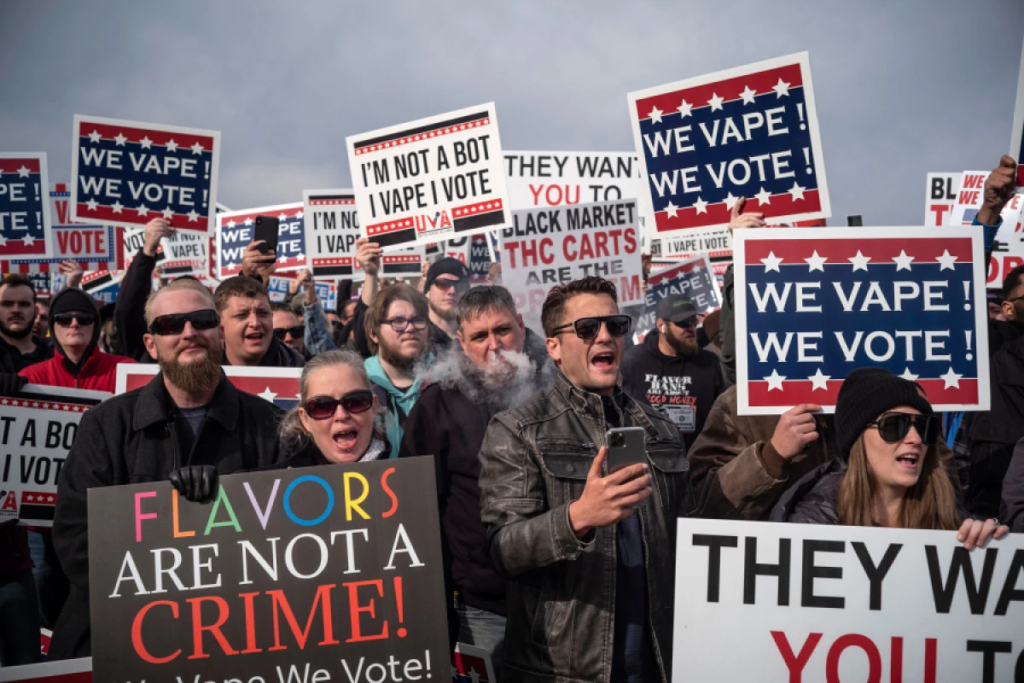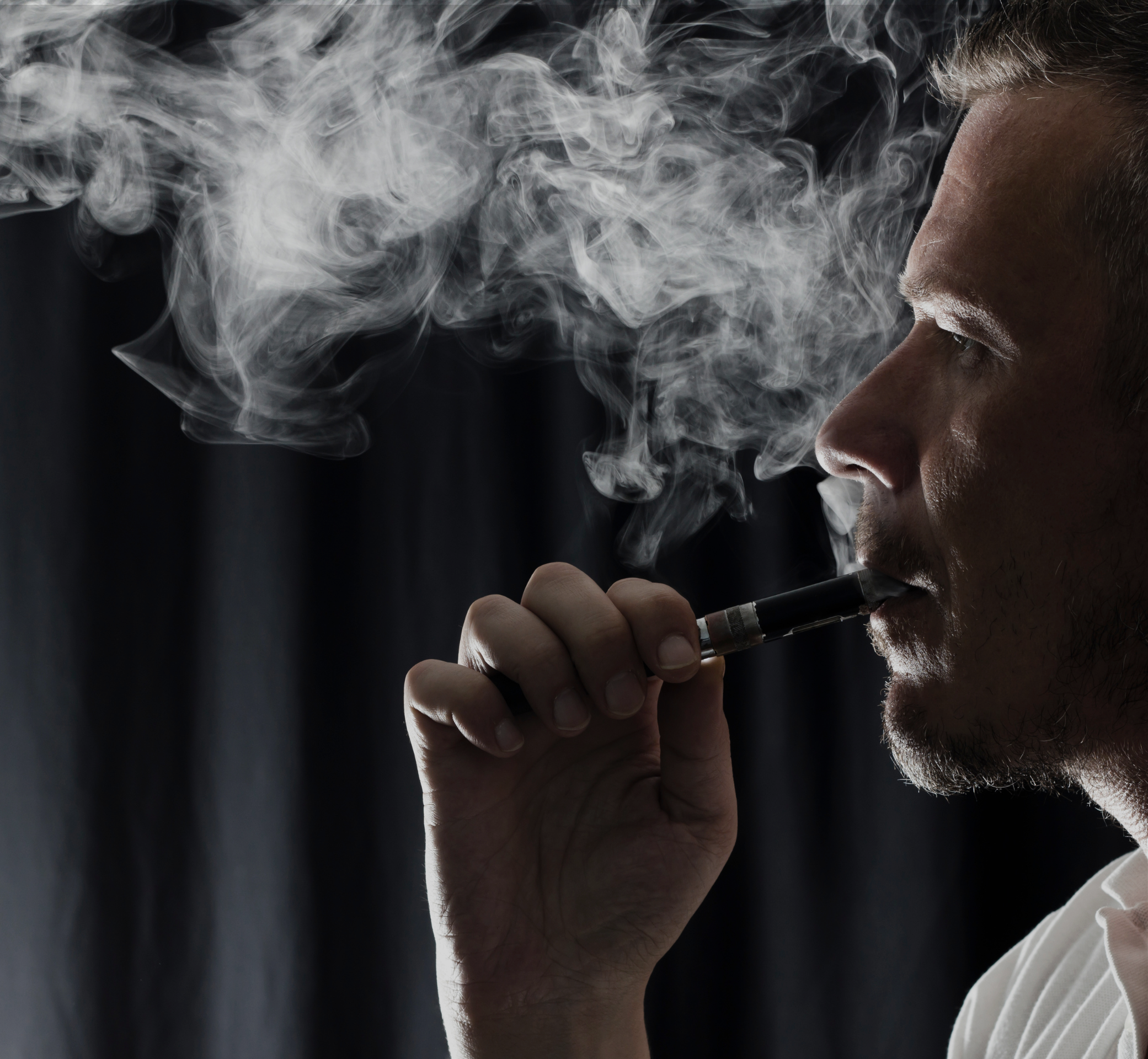Par Yaël Ossowski
Il faut souvent beaucoup de temps aux acteurs influents, aux défenseurs et aux promoteurs des politiques de santé pour admettre leurs erreurs.
Lorsqu'il s'agit de sujets tels que les régimes à la mode, les graisses saturées, les pyramides alimentaires et la consommation de sucre, les croyances consensuelles de longue date et les actions gouvernementales s'est avéré erroné par la suite ont eu un impact négatif durable.
Mais rien n'a été plus flagrant et plus néfaste à notre époque que la persistance du lobby de la santé publique négationnisme de la valeur de réduction des risques des produits de vapotage de nicotine et autres alternatives à la cigarette.
Ce déni s'est manifesté sous de nombreuses formes : campagnes d'information publique diaboliser les dispositifs de vapotage, désinformation sur les maladies pulmonaires causées par les cartouches de cannabis contaminées, interdictions, restrictions et taxes concernant les produits nicotiniques aromatisés (en particulier ceux sans tabac), des demandes d'autorisation de mise sur le marché kafkaïennes géré par les autorités de réglementation des médicaments, et une croisade sans fin visant à empêcher les consommateurs adultes d'avoir accès à des produits vitaux à cause de comportements illicites et risqués par des adolescents.
Ces organismes de santé publique, les groupes antitabac et journalistes alliés, Quelles que soient leurs intentions, ils ont cherché à convaincre le public que fumer est non seulement mauvais et dangereux — un aveu facile —, mais aussi que les dispositifs alternatifs de nicotine comme les produits de vapotage, les sachets de nicotine et le tabac chauffé sont tout aussi ou moins efficaces. encore plus risqué qu'un paquet de cigarettes.
Ces conclusions sont facilement réfutées par le des millions de vapoteurs passionnés qui ont depuis longtemps abandonné les cigarettes et adopté des réservoirs personnalisés, des vaporisateurs et des liquides aromatisés qui leur procurent une sensation de nicotine familière sans le goudron et les sous-produits combustibles du tabac.

La mission de santé publique visant à brouiller les pistes concernant la perception populaire des alternatives à la nicotine telles que le vapotage — même si cela est scientifiquement prouvé 95% moins nocif Plus que les cigarettes, le tabac nuit réellement à la santé publique américaine. Et nous en avons maintenant la preuve.
Cette preuve se trouve à la fois dans l'augmentation des ventes de cigarettes à l'échelle nationale et dans une étude très approfondie sur le tabagisme chez les adolescents dans une juridiction où le vapotage de nicotine aromatisée était interdit.
Selon le chiffres de vente D'après les données recueillies par la Federal Trade Commission pour son rapport 2020 sur le tabac, les Américains ont acheté plus de cigarettes en 2020 qu'ils n'en avaient acheté depuis plus d'une génération.
“ Le nombre total de cigarettes déclarées vendues par les principaux fabricants, soit 203,7 milliards d’unités en 2020, a augmenté de 0,8 milliard d’unités (0,4 %) par rapport à 2019, soit la première augmentation des cigarettes vendues en vingt ans ”, indique le rapport.
Les Américains pourraient acheter plus de cigarettes pour un une multitude de raisonsConfinement, stress lié à la pandémie et aux mesures gouvernementales, pertes d'emploi, fermetures d'écoles, etc. Ou peut-être parce que des sources de santé publique et des médias fiables leur ont répété à maintes reprises que le vapotage, une alternative utilisée par des millions d'adultes pour arrêter de fumer, est tout aussi dangereux.
Quelle que soit votre conclusion, le s'orienter ce qui a fait baisser le pourcentage de fumeurs américains à 14 pour cent en 2019 (lorsque la dernière enquête nationale complète a été réalisée) est en pause. Et cela devrait tous nous inquiéter.
Nous en voyons des échos anecdotiques dans un pièce de style récente Dans le New York Times, un article soulignait le “ retour en force ” des cigarettes auprès de la clientèle bourgeoise et hipster de Brooklyn, à New York.
“ Je suis repassée à la cigarette parce que je pensais que ce serait meilleur pour ma santé que la Juul ”, a affirmé une femme. Il semblerait que les groupes de pression en matière de santé publique aient atteint leurs objectifs.
Du côté des preuves, une étude approfondie Article de mai 2021 Une étude publiée dans JAMA Pediatrics a révélé qu'après l'enquête de San Francisco interdiction du vapotage aromatisé et les produits du tabac, davantage d'adolescents se sont mis à fumer.
“ L’interdiction de la vente de produits du tabac aromatisés à San Francisco a été associée à une augmentation du tabagisme chez les élèves mineurs du secondaire par rapport aux autres districts scolaires ”, conclut l’article.
Comme les défenseurs de la réduction des méfaits du tabac l'ont fait revendiqué depuis plusieurs années, Les campagnes de santé publique persistantes, relayées par des médias à sensation, visant à diaboliser le vapotage et à en restreindre l'accès, ont conduit à… hausse prévisible en ce qui concerne les taux de tabagisme, tant chez les adultes que chez les adolescents.
Quel que soit votre avis sur le fait de savoir si les dispositifs de vapotage, le tabac chauffé, le snus ou les sachets de nicotine constituent la voie la plus attrayante et la plus efficace pour arrêter de fumer, cette récente augmentation du tabagisme démontre que des dommages réels surviennent lorsque des groupes de pression du secteur de la santé, influencés par des considérations politiques, exercent une influence néfaste. chercher à éliminer les alternatives de marché. Et nous devons nous demander pourquoi ils persistent.
L'opposition de ces groupes, ainsi que journalistes affiliés Pour les chercheurs, l'essor des alternatives à la nicotine pourrait être moins lié à des questions quantitatives de science et de santé qu'à la manière dont ces produits ont été créés et sont distribués : par des entrepreneurs proposant des solutions sur le marché.
Ces entrepreneurs sont des propriétaires de boutiques de vape, des fabricants de liquides pour cigarettes électroniques, des gérants de stations-service, des entreprises de technologies de vapotage, des entreprises de tabac qui se tournent vers des produits alternatifs, et toute une classe créative d'influenceurs du vapotage, en ligne et hors ligne, qui tentent d'offrir aux fumeurs une seconde chance de vivre longtemps. Ce sont les de vrais héros de la réduction des risques au XXIe siècle.
Le fait que les marchés spontanés puissent apporter des solutions utiles et plus saines grâce à la demande des consommateurs, plutôt que par des décrets, des financements et des programmes directement contrôlés par les bureaucraties et agences de santé publique, va à l'encontre d'une grande partie de l'idéologie qui prévaut dans le domaine de la lutte antitabac.
C’est donc le premier qui incarne le véritable esprit d’innovation américain et qui a contribué à la prospérité et à la compétitivité de ce pays, tandis que le second nous a fait défaut à maintes reprises.
Si nous voulons remporter une véritable victoire en matière de santé publique et aider les fumeurs à arrêter pour leur offrir une vie longue et épanouie, il est temps de surmonter cette aversion pour les innovations du marché. La santé future de notre nation en dépend.
Yaël Ossowski est directrice adjointe du Consumer Choice Center, partenaire de la World Vapers' Alliance. L'article original a été publié. ici.




